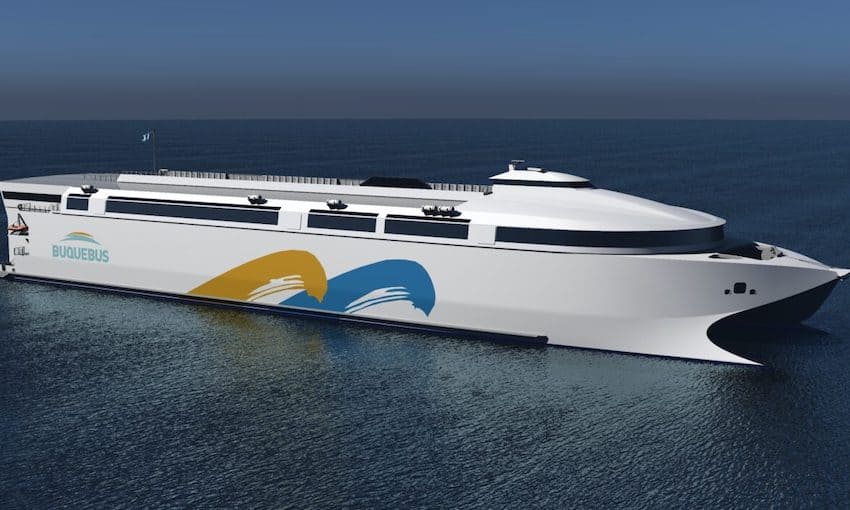SHIPBUILDER Incat has celebrated a milestone in the construction of their upcoming ferry Hull 096, with the completion of the rollback and placement of the superstructures.
Hull 096, to be named China Zorilla, will reportedly become the largest electric ferry in the world upon completion, boasting an onboard capacity of 2100 persons and 226 vehicles.
The vessel is the ninth to be built by Incat for South American company Buquebus, which operates ferry services primarily between Argentina and Uruguay, with an emphasis on tourism-based services.
Incat Chairman Robert Clifford expressed his satisfaction with the vessel’s progress: “At 130 metres long, this is the largest vessel we have ever rolled back, and our crews did an exceptional job”.
Having originally been designed as a gas-powered ferry, Hull 096 was briefly deferred during covid, when Incat changed specifications, redesigning the vessel to be more environmentally friendly per Buquebus’ wishes.
Incat CEO Stephen Casey described his excitement as to the vessel’s progress “Now that most of the structural work is complete, it allows our fit-out crews to begin their work on the interior of the vessel, this is a really exciting time in the build process”.
Incat announced in March this year (2024) that Hull 096 was more than 50 percent complete, and maintains that it remains on schedule for delivery in 2025.
Incat stated earlier this year its intention to participate in shaping the future of decarbonisation in shipping through eco-friendly shipbuilding, as the maritime industry makes a global shift to zero-emission transport.
Mr Casey summarised the future of Incat’s eco-designs, saying: “We have had significant interest from ferry operators across the world since launching the designs of our zero-emission battery electric vessels and are well progressed in the planning for our next new vessel projects”.
Upon delivery, the vessel will operate along the Rio de la Plata (River Plate), on a 72 kilometre route between Argentina and Uruguay.

